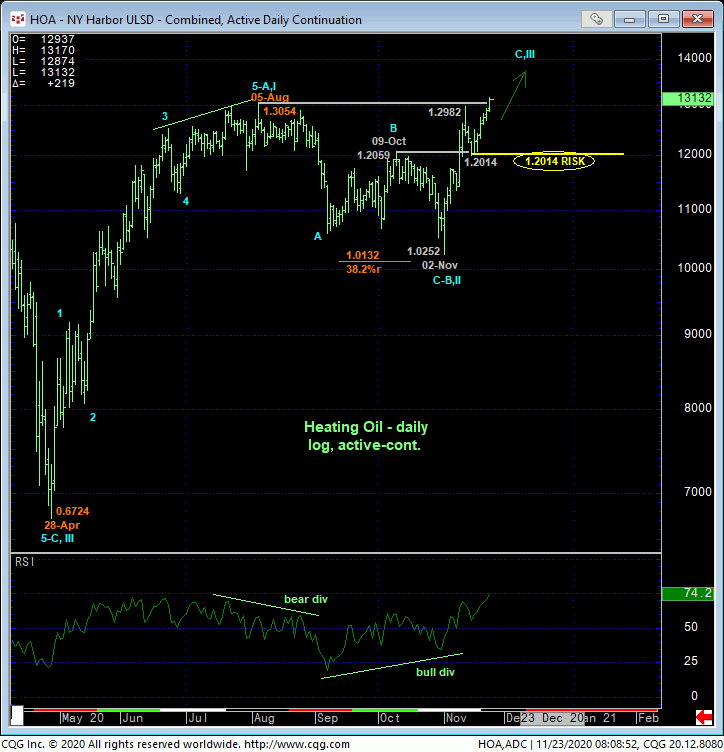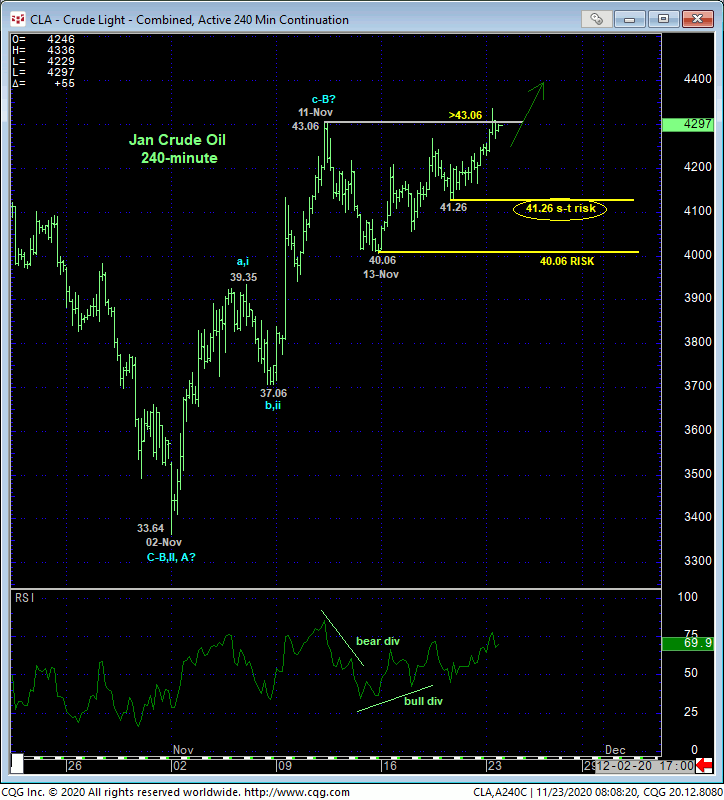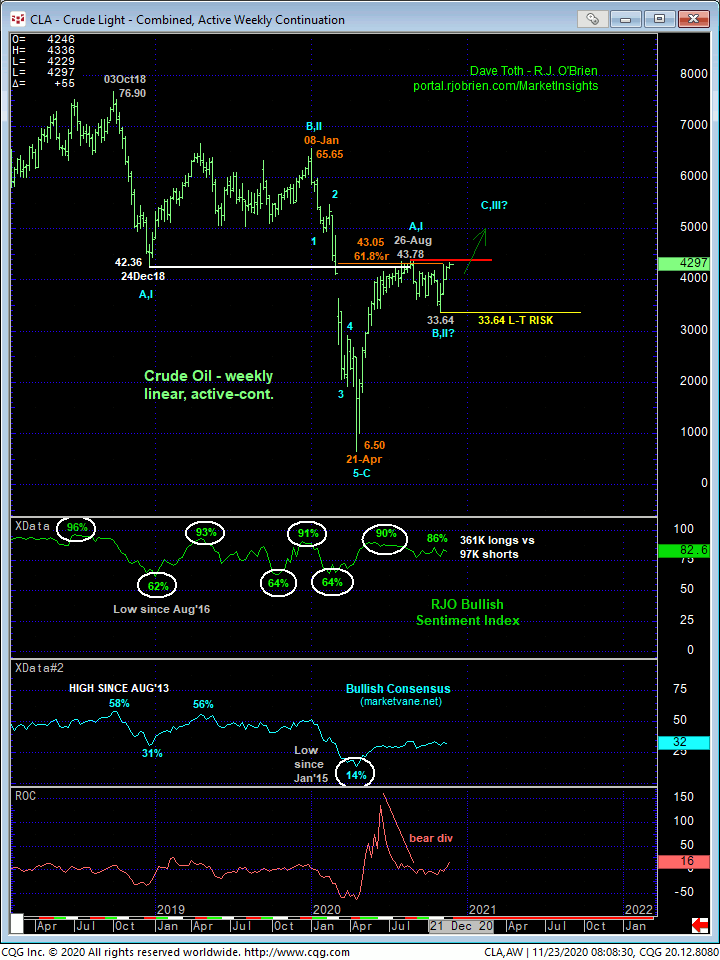
JAN HEATING OIL
Overnight’s break above 11-Nov’s 1.2982 high in the now-prompt Jan contract and our short-term risk parameter discussed in Thur’s Technical Webcast not only reinstates the uptrend from 02-Nov’s 1.0252 low, but also 2020’s major reversal that dates from 28-Apr’s 0.6724 low. The 240-min chart below shows that this continued and important strength leaves smaller- and larger-degree corrective lows in its wake at 1.2700 and 1.2014, respectively, that now serve as our new short- and long-term risk parameters from which a bullish policy and exposure can be objectively rebased and managed.


The daily (above) and weekly (below) log scale charts show today’s break above 05-Aug’s pivotal 1.3054 high that confirms Aug-Nov’s sell-off attempt as a complete 3-wave correction and reinstates Apr-Aug’s uptrend that preceded it. With sentiment/contrary opinion indicators wafting around neutral/indifferent levels and NO levels of any technical merit between spot and former 1.6380-area support from Dec’18’s, the market’s upside potential is indeterminable and potentially extreme. This said and if this market is truly strong to the point of warranting a full and aggressive bullish policy, now-former 1.30-to-1.26-handle-area resistance should hold as new support going forward. A failure below 1.2700 would be an early indication that such a resumed bullish count and exposure are wrong while a failure below 1.2014 will break Nov’s uptrend and throw the market back into a corrective/consolidative range of 1.30-to-1.02.
These issues considered, a bullish policy remains advised for long-term players with a failure below 1.2014 required to negate this call and warrant its cover. Shorter-term traders are advised to first approach setback attempts to 1.3000 OB as corrective buying opportunities with a failure below 1.2700 required to negate this call and warrant its cover. In lieu of such weakness, further and possibly protracted gains should not surprise straight away.

JAN CRUDE OIL
From a short-term intermediate-term scale the technical construct for crude is virtually identical to that detailed above in diesel, with overnight’s break above 11-Nov’s 43.06 high reinstating this month’s uptrend and defining smaller- and larger-degree corrective lows at 41.26 and 40.06 as our new short- and longer-term risk parameters from which non-bearish decisions like short-covers and bullish punts can be objectively based and managed.


The only difference between the two is that, thus far, crude hasn’t broken its pivotal high from 26-Aug at 43.78. We “suspect” it will, but until and unless it does, we cannot ignore the prospect that the lateral consolidation between that Aug high and 02-Nov’s 33.64 low is still intact and that further lateral chop within this range might yet lie ahead. As a direct result of today’s break above 43.06 however, the market has defined a smaller-degree corrective low at 41.26 around which we can objectively manage a bullish bias. If today’s continuation of this month’s rally is just the base for further and potentially protracted gains ahead, then it should be able to not only easily sustain trendy, impulsive behavior above such recent corrective lows, but behave in an increasingly obvious, trendy, impulsive manner to the upside. A failure below 41.26 would be the first indication of trouble while a failure below 40.06 will break Nov’s rally and throw the market back into the 43.78 – 33.64 consolidative range.
These issues considered, a bullish policy remains advised for longer-term players with a failure below 40.06 required to negate this call and warrant its cover. Shorter-term traders are advised to first approach setback attempts to 42.57 OB as corrective buying opportunities with a failure below 41.26 required to negate this specific call and warrant its cover. IN lieu of such weakness and especially following a 3-month breakout above 26Aug’s 43.78 high, further and possibly accelerated gains should not surprise straight away.


